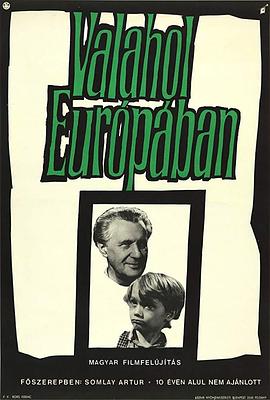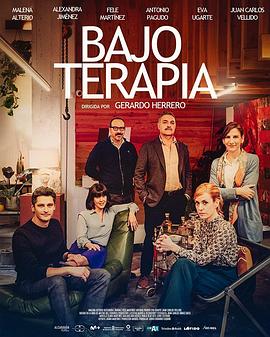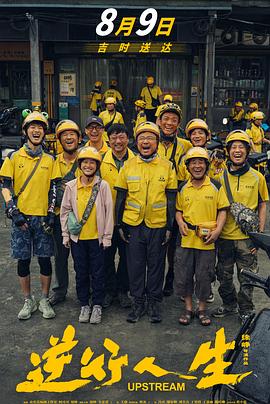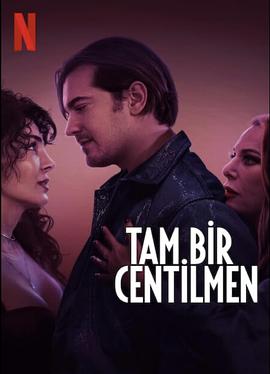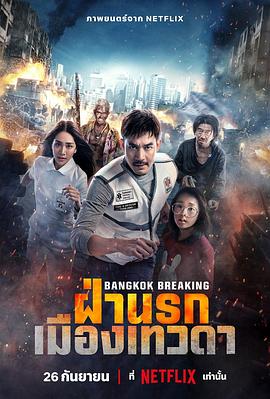欧洲的某个地方剧情介绍
欧洲的某个地方剧情片免费观看,该剧情片1948年上映于其它,是一部好看的其它剧情片,主演Artúr,Somlay,Miklós,Gábor,Zsuzsa,Bánki,导演Radványi,Géza执行拍摄。剧情片欧洲的某个地方讲的什么:
Somewhere in the remote region, the war ends. In the midst of ruined cities and houses in the streets, in rural hamlets, everywhere where people still live, are children who have lost their homes and parents. Abandoned, hungry, and in rags, defenseless and humiliated, they wander through the world. Hunger drives them. Little streams of orphans merge into a river which rushes forward and submerges everything in its path. The children do not know any feeling; they know only the world of their enemies. They fight, steal, struggle for a mouthful of food, and violence is merely a means to get it. A gang led by Cahoun finds a refuge in an abandoned castle and encounters an old composer who has voluntarily retired into solitude from a world of hatred, treason, and crime. How can they find a common ground, how can they become mutual friends The castle becomes their hiding place but possibly it will also be their first home which they may organize and must defend. But even for this, the price will be very high. To this simple story, the journalist, writer, poet, scriptwriter, movie director, and film theoretician Béla Balázs applied many years of experience. He and the director Géza Radványi created a work which opened a new postwar chapter in Hungarian film. Surprisingly, this film has not lost any of its impact over the years, especially on a profound philosophical level. That is to say, it is not merely a movie about war; it is not important in what location and in what period of time it takes place. It is a story outside of time about the joyless fate of children who pay dearly for the cruel war games of adults. At the time it was premiered, the movie was enthusiastically received by the critics. The main roles were taken by streetwise boys of a children's group who created their roles improvisationally in close contact with a few professional actors, and in the children's acting their own fresh experience of war's turmoil appears to be reflected. At the same time, their performance fits admirably into the mosaic of a very complex movie language. Balázs's influence revealed itself, above all, in the introductory sequences an air raid on an amusement park, seen in a montage of dramatic situations evoking the last spasms of war, where, undoubtedly, we discern the influence of classical Soviet cinematography. Shooting, the boy's escape, the locomotive's wheels, the shadows of soldiers with submachine guns, the sound of a whistle—the images are linked together in abrupt sequences in which varying shots and expressive sharp sounds are emphasized. A perfectly planned screenplay avoided all elements of sentimentality, time-worn stereotypes of wronged children, romanticism and cheap simplification. The authors succeeded in bridging the perilous dramatic abyss of the metamorphosis of a children's community. Their telling of the story (the scene of pillaging, the assault on the castle, etc) independently introduced some neorealist elements which, at that time, were being propagated in Italy by De Sica, Rossellini, and other film artists. The rebukes of contemporary critics, who called attention to formalism for its own sake have been forgotten. The masterly art of cameraman Barnabás Hegyi gives vitality to the poetic images. His angle shots of the children, his composition of scenes in the castle interior, are a living document of the times, and underline the atmosphere and the characters of the protagonists. The success of the picture was also enhanced by the musical art of composer Dénes Buday who, in tense situations, inserted the theme of the Marseilaise into the movie's structure, as a motive of community unification, as an expression of friendship and the possibility of understanding. Valahol Europaban is the first significant postwar Hungarian film. It originated in a relaxed atmosphere, replete with joy and euphoria, and it includes these elements in order to demonstrate the strength of humanism, tolerance, and friendship. It represents a general condemnation of war anywhere in the world, in any form.猜您喜欢
- 胜利2024李惠利,朴世婉,赵雅兰,崔智秀,白遐怡,权俞娜,廉智詠,李韩周,朴孝恩
HD中字
- 非常性治疗玛伦娜·阿特里奥,亚历山德拉·希门内斯,费雷·马丁内兹,Antonio Pagudo,Eva Ugarte,胡安·卡洛斯·凡希多,Belén Gil,Carlos Ros,I?igo Peronié
HD中字
- 我和老爸是同桌李丞峰,吴迪,张光北,侯勇,胡然,刘梓妍,祝延平,韩铠伊,吴双
HD中字
- 刺猬葛优,王俊凯,李萍,刘威葳,耿乐,张本煜,赵千紫,李千逸,吕行,朱怀旭,蒋灵儿,朱亚男,恩美,李汀珝,范明,毛阿敏,王自健,任素汐,吴双,刘雅瑟,潘斌龙
HD中字
- 逆行人生2024徐峥,辛芷蕾,王骁,贾冰,冯兵,丁勇岱,丁嘉丽,陈哈琳,邬家楷,刘美含,黄小蕾,于和伟,马东,梁静,张占义,吴彼,周铁男,王啸宇
HD中字
- 风月君子察合台·乌鲁索伊,埃布鲁·沙欣,塞纳伊·古勒,纳兹利·布卢姆,拉莱·巴萨尔,Haki Bi?ici,Dilek Tora,Didem S?kmen
HD中字
- 曼谷危情:天堂地狱苏格拉瓦·卡那诺,三亚·库纳康,Atitaya Tribudarak
HD中字
- 杀手热约瑟夫·高登-莱维特,谢琳·伍德蕾,理查德·麦登,克莱尔·霍尔曼,巴布·塞赛,马诺斯·加夫拉斯,比利·克莱门茨,Billie Vee,Argyris Gaganis
HD中字
欧洲的某个地方评价口碑如何
豆瓣网友:导演Radványi,Géza的作品,有欢笑、有泪水、有喜悦、有悲伤,虚拟世界中的感情是多彩的,并不同于我们现实中不爽就一直玩的感觉,虚拟感情的交错,当看完之后会觉得更加舒畅《欧洲的某个地方》不同于其他作品,没有紧迫感、虚浮的情节及杂乱的画面,却在不断教导我们,不像老师家长苦口婆心语重心长的教诲。我们看亦或综艺动漫,往往是融入进去,在不知不觉中去了解这些似乎不容易被我们所发现、所理解的道理。再说近一点,看视频时设身处地会发现这是现实中更近教导的教导!
神马网友:剧情片欧洲的某个地方人物介绍最近由Artúr,Somlay,Miklós,Gábor,Zsuzsa,Bánki等主演,作品一经播出就受到了很多观众的欢迎和认可,演员的演技都是非常值得肯定的,我觉得本片中的演员们在里面的演技都非常好,他能够去把握这个角色所要表达的情感,并且向观众展现出来。剧情人物和故事线索繁而不乱,情节流畅如风行水上,结局也让人心潮澎湃,确实是一部好看的。
百度网友:在线观看完欧洲的某个地方完整版,不吹不黑槽点是有的,和一些喜欢看剧情片的朋友给出的评论相比,我有一些不同的看法,欧洲的某个地方这部外在展示出来的东西,虽然比本身更精彩吧,但是最后我还是没有打高分。再此感谢评论中一起讨论的朋友,不管我们意见相同或者相左,谢谢大家。
